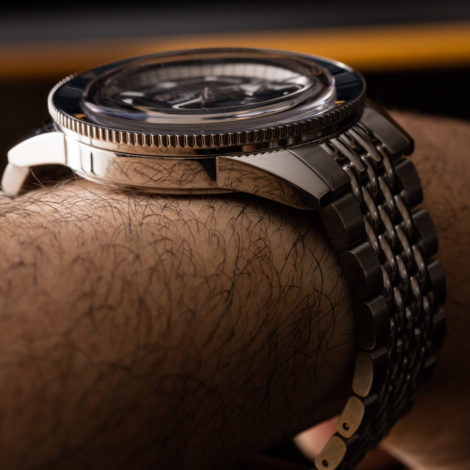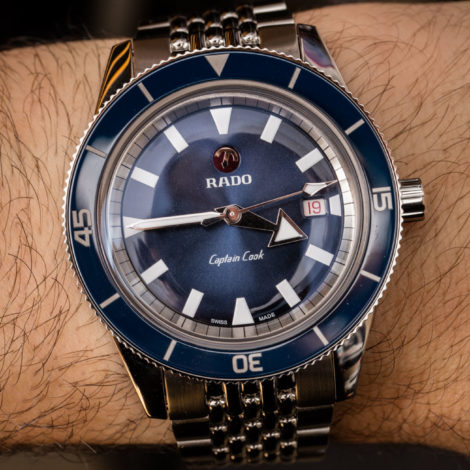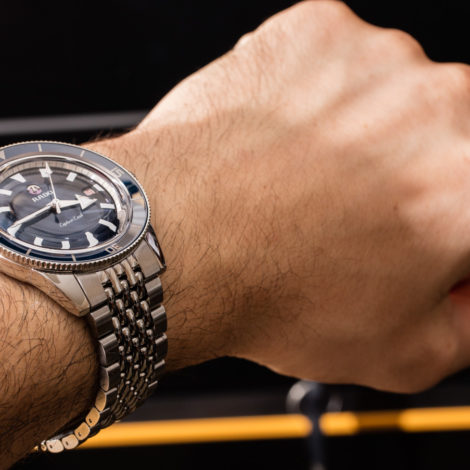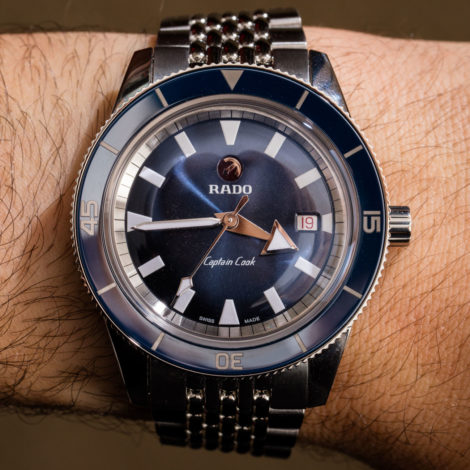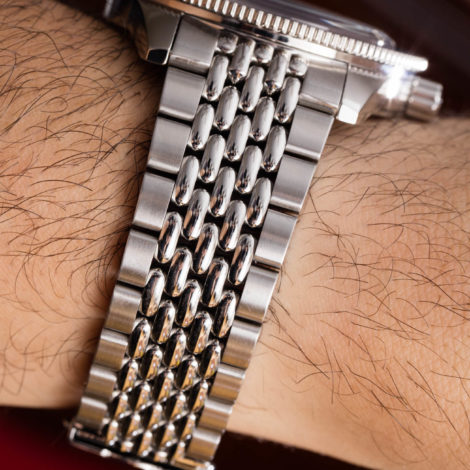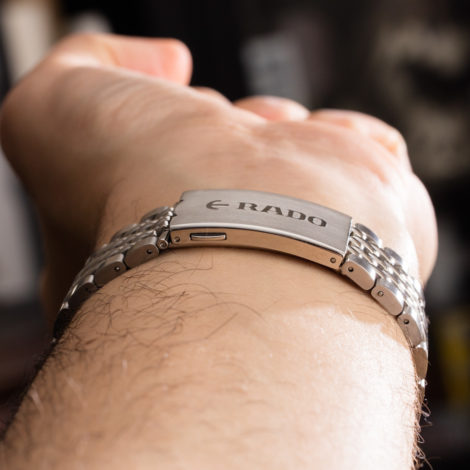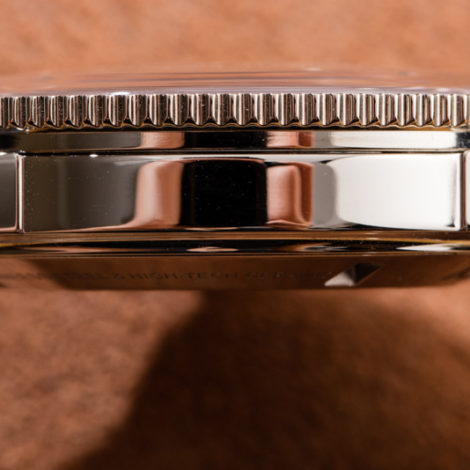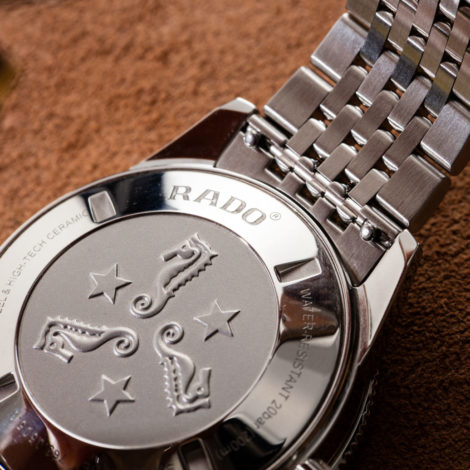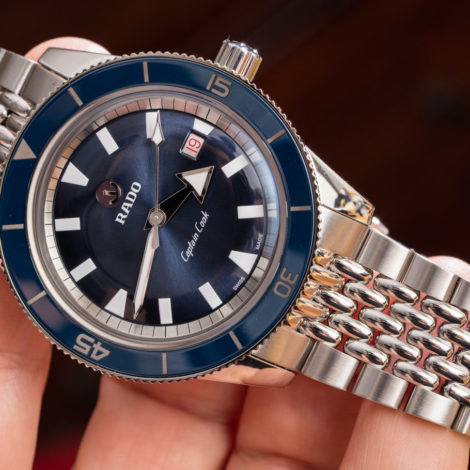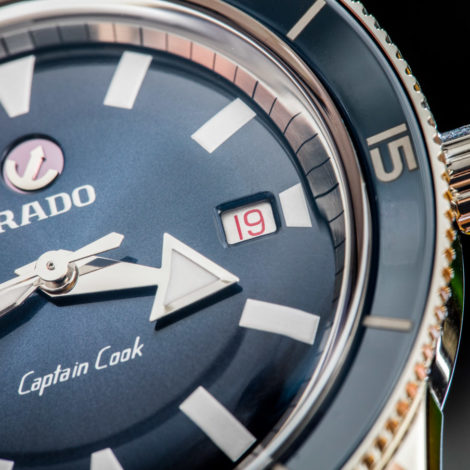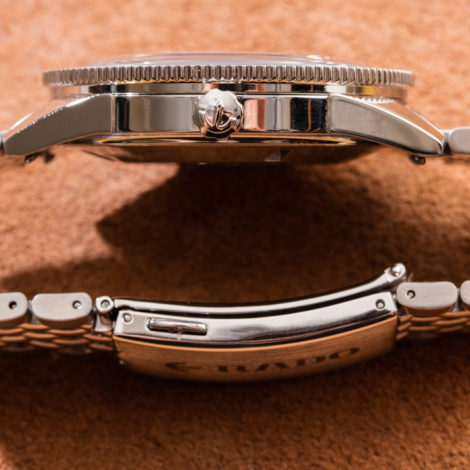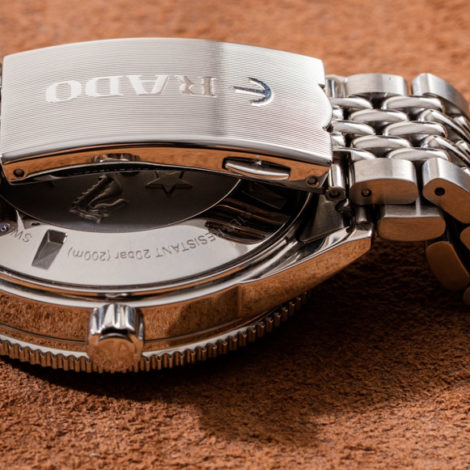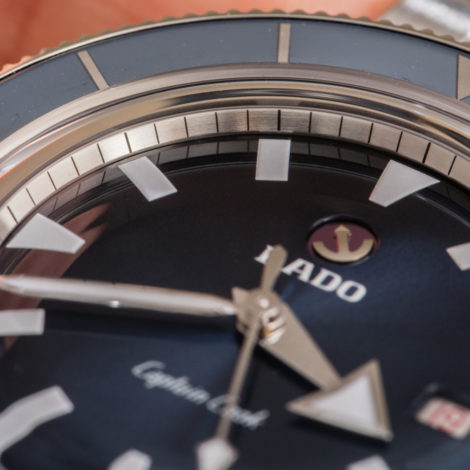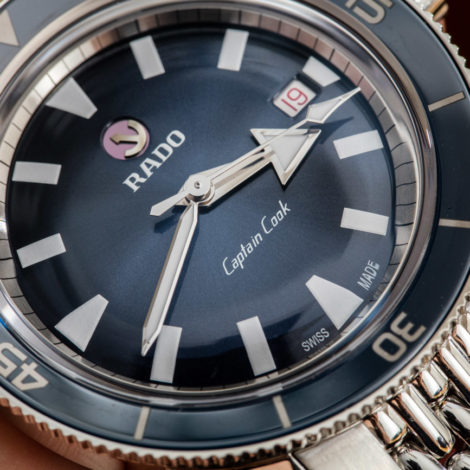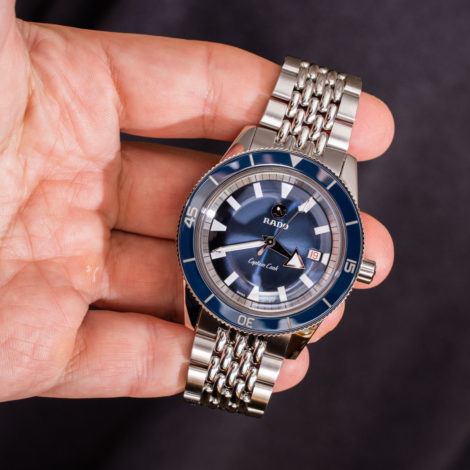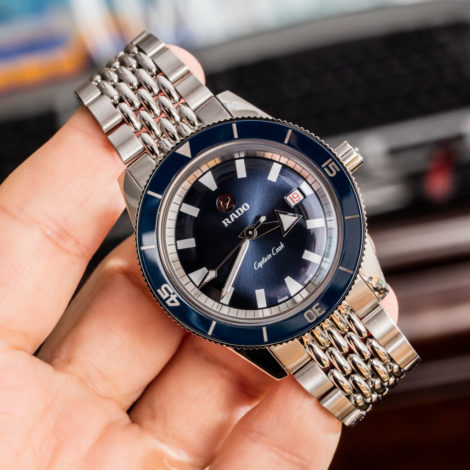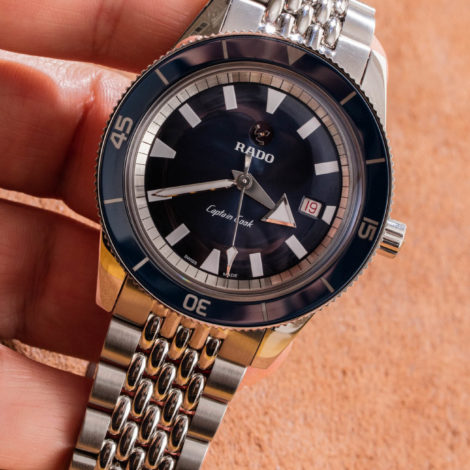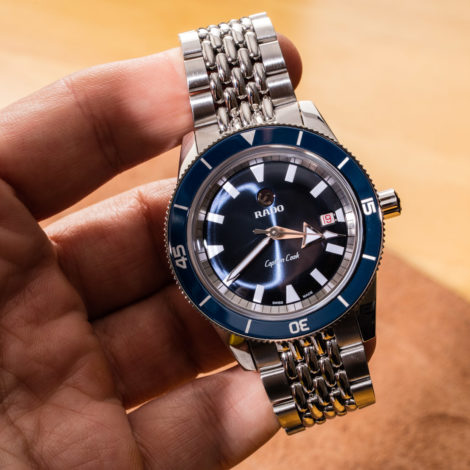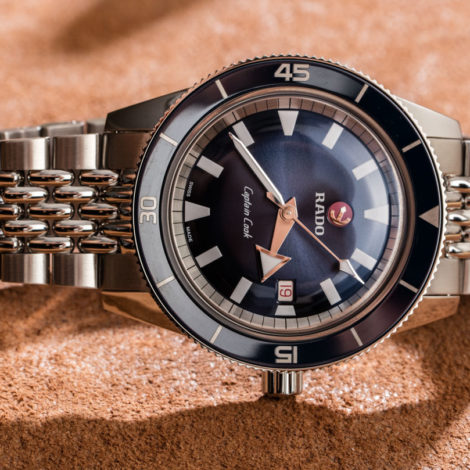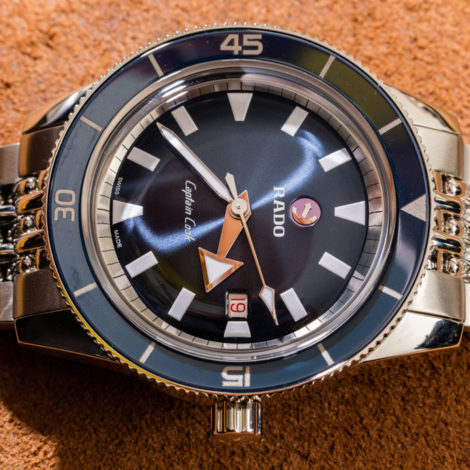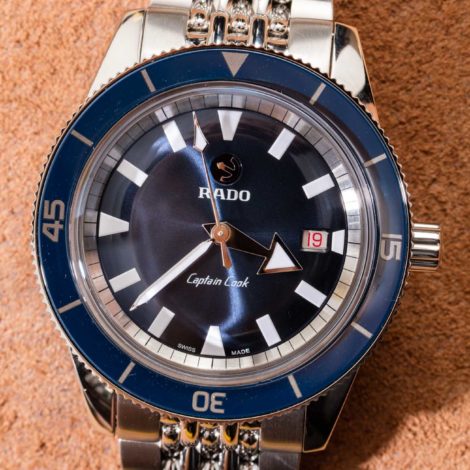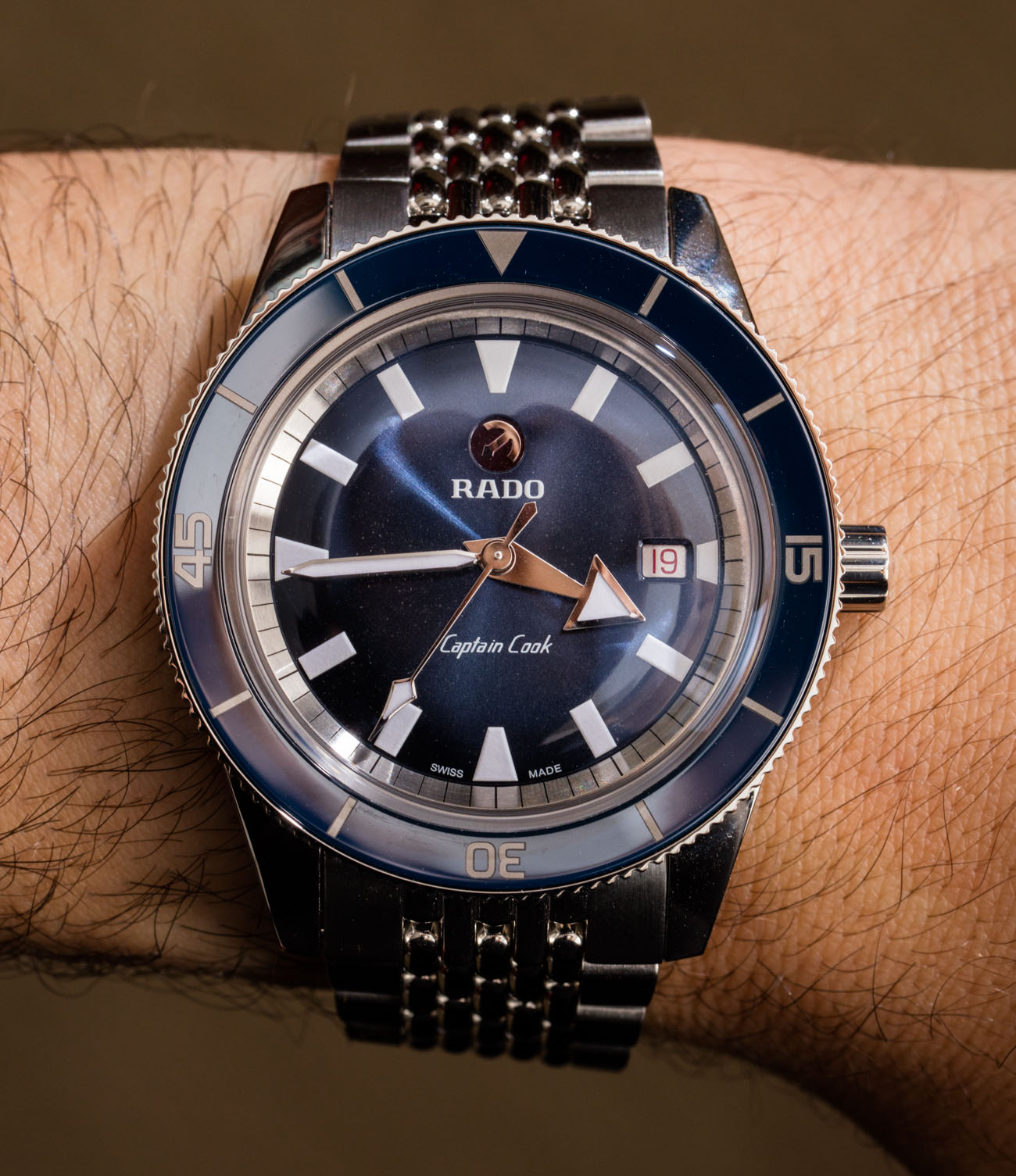
Not counting various colors and whether or not a watch is on a strap or bracelet, Swiss watch brand Rado currently has five watches on its website with “Captain Cook” in the name, the most recently of which is this inconspicuously titled “Captain Cook Automatic.” In my opinion, it is the best of the Rado Captain Cook watches currently available. This particular version is the steel with blue dial and matching ceramic bezel Rado Captain Cook Automatic reference R32505203 | 01.763.0505.3.020.
In addition to the ocean explorer many people learned about in history class, Captain Cook is the name of a Rado diver’s watch collection that, according to Rado, was debuted in 1962. For many years the Captain Cook collection had zero relevance to the Rado brand, which in the 1980s decided it was going to be a brand that was all about being modern. Rado was the first brand to popularize ceramic as a watch case material — though it wasn’t until 2000 when Chanel used ceramic for the J12 that it became as popular a case material as it is today.
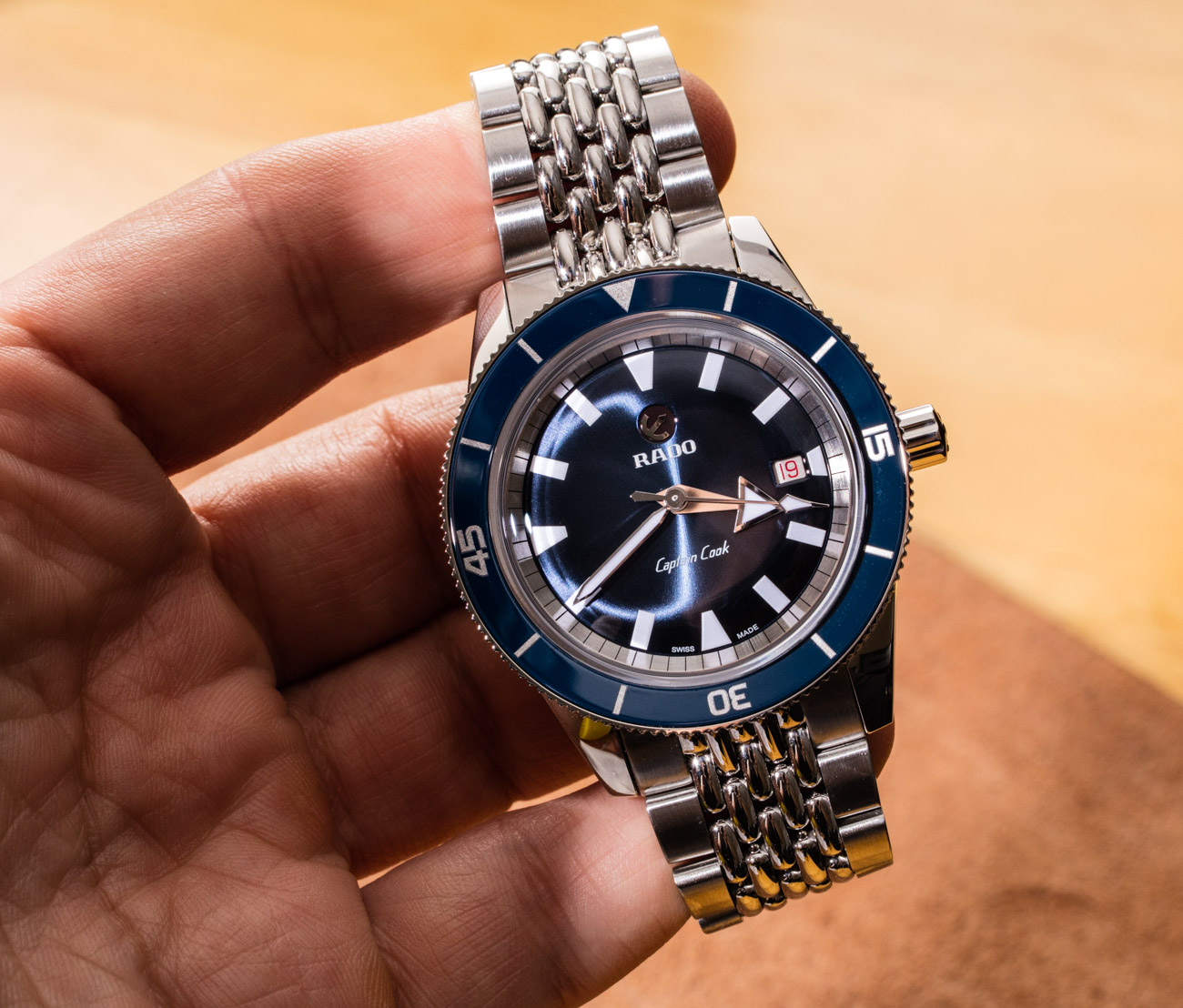
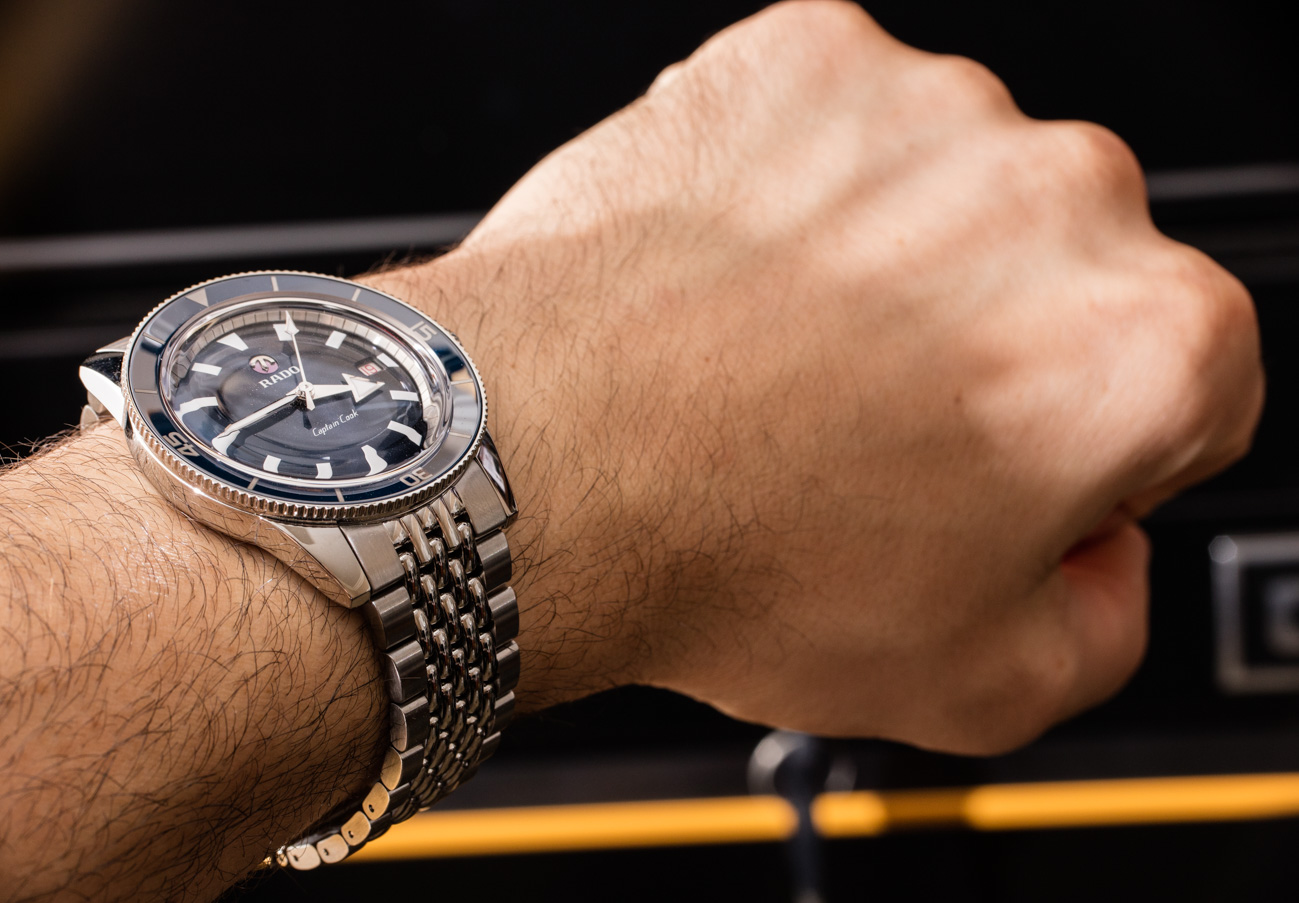
Rado’s popularity has never been strong in the United States compared with markets such as South America and India. Rado (which is part of the Swatch Group) has re-imagined itself a few times over the last decade in the form of various types of products and design experiments. More recently Rado has found some success by reminding people what they used to produce in the past and by recreating a lot of it for today’s audiences. That was the idea behind the Captain Cook.
Prior to this “sweet spot” 42mm-wide Captain Cook Automatic coming out, Rado released a “true to original” Captain Cook Automatic watch with a 37mm-wide case (aBlogtoWatch hands-on here), and a modern version of the Captain Cook as the HyperChrome Captain Cook (aBlogtoWatch review here) in a much larger 45mm-wide case. I liked the idea of the 45mm-wide model, but it was a bit large for me, and the 37mm-wide more classic version has a great look, but was far too small for me. Rado quietly introduced this 42mm-wide version of the Captain Cook Automatic that combines the slick retro-styling of the 37mm-wide version, but with a much more modern and fashionable case size of 42mm.
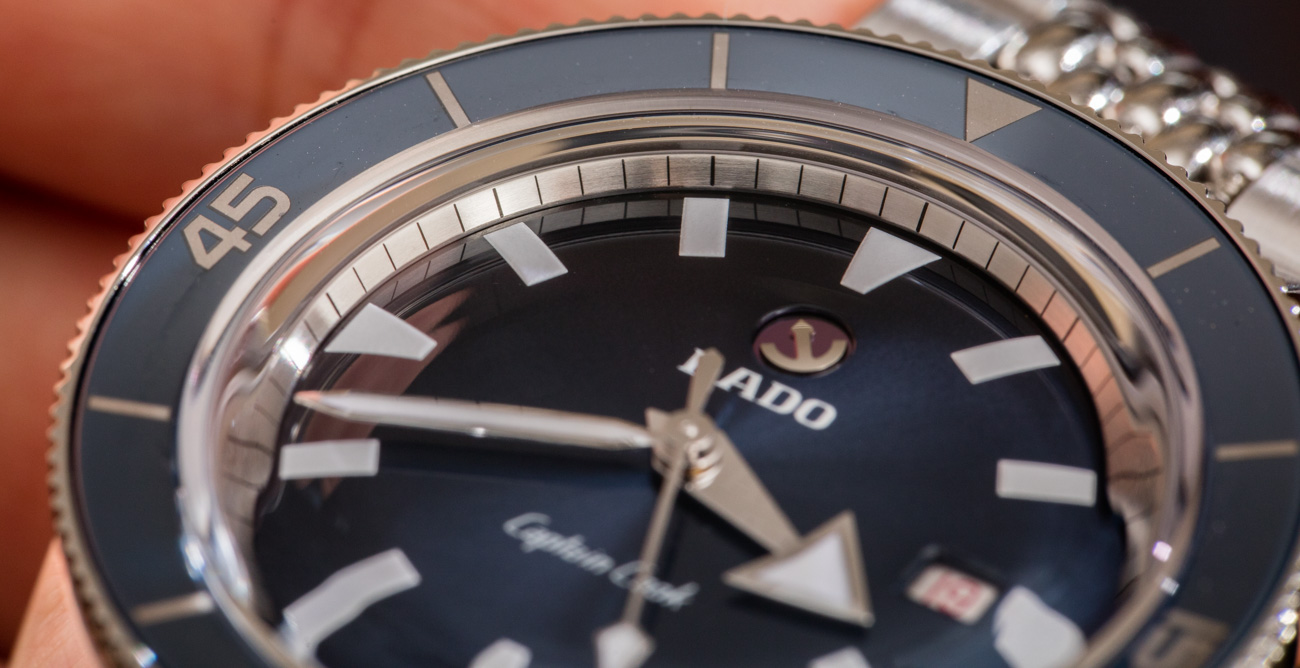
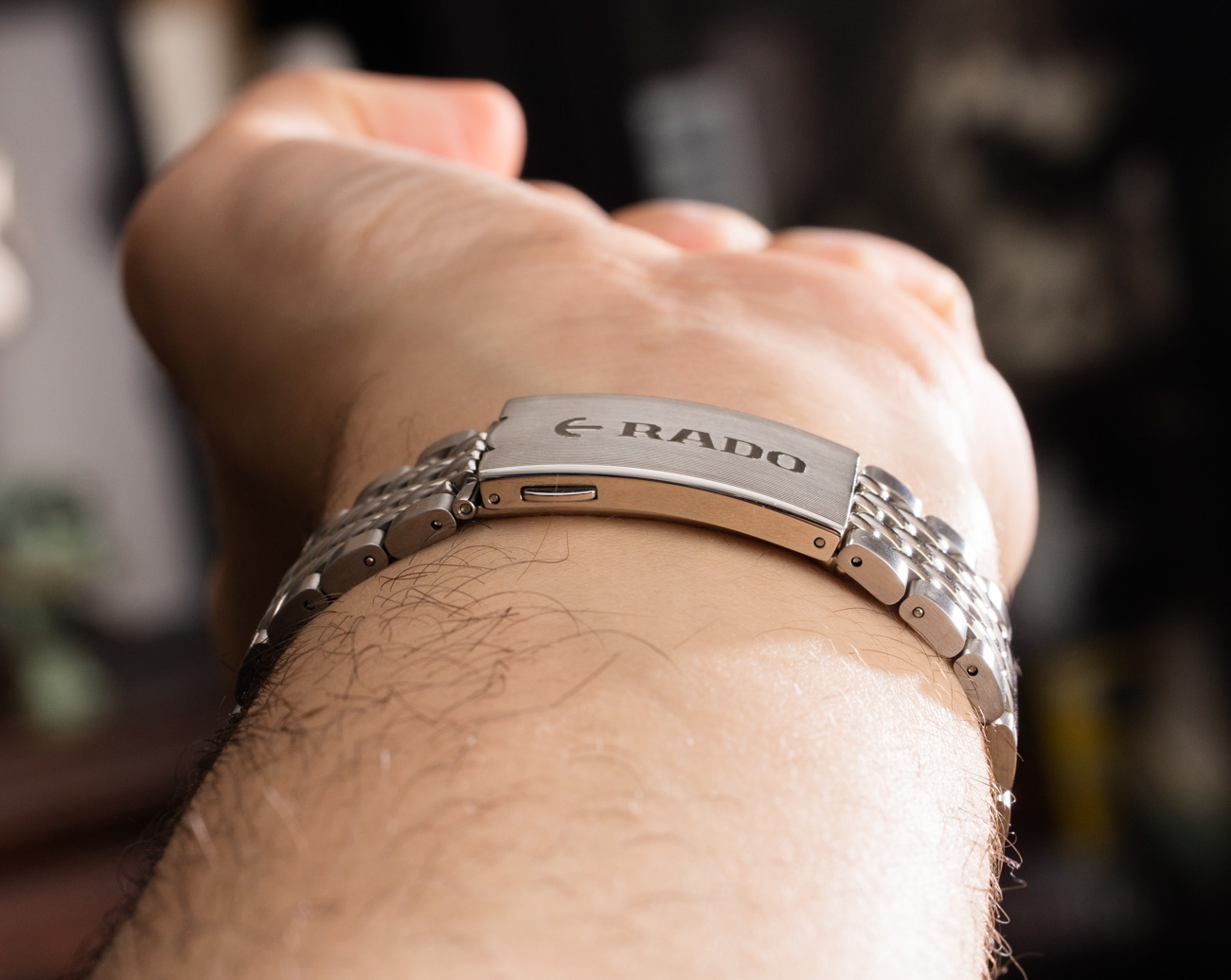
Rado really hit upon something nice here, as there is a lot to like about the Captain Cook Automatic 42. It isn’t just a retro-styled modern dive watch. It is a modern dive watch that learns some lessons that a lot of contemporary designs have either forgotten or eschewed. These features, combined with a sensible price and great quality, make for a very compelling timepiece that currently comes with a brown, blue, blue, gray, or green dial and either on a leather strap or this matching steel bracelet.
There is no one particular reason why the Captain Cook Automatic 42mm is a great casual/sport wristwatch choice. It really comes down to a totality of reasons that blend together into a really attractive package. As I’ve said a number of times, when the Swatch Group wants to, they can make a class-leading one. In fact, most of the group’s watches are, in a lot of ways, under-appreciated because of a lack of branding, marketing, or consumer engagement. For those who search, there are surprises within the group across various brands. Daily-wear dive watches seem to be of particular interest to the Swatch Group, and I recently also reviewed the Mido Ocean Star Titanium — which, while a different design, has a similar price point and appeal in a dive watch as this Rado Captain Cook Automatic.
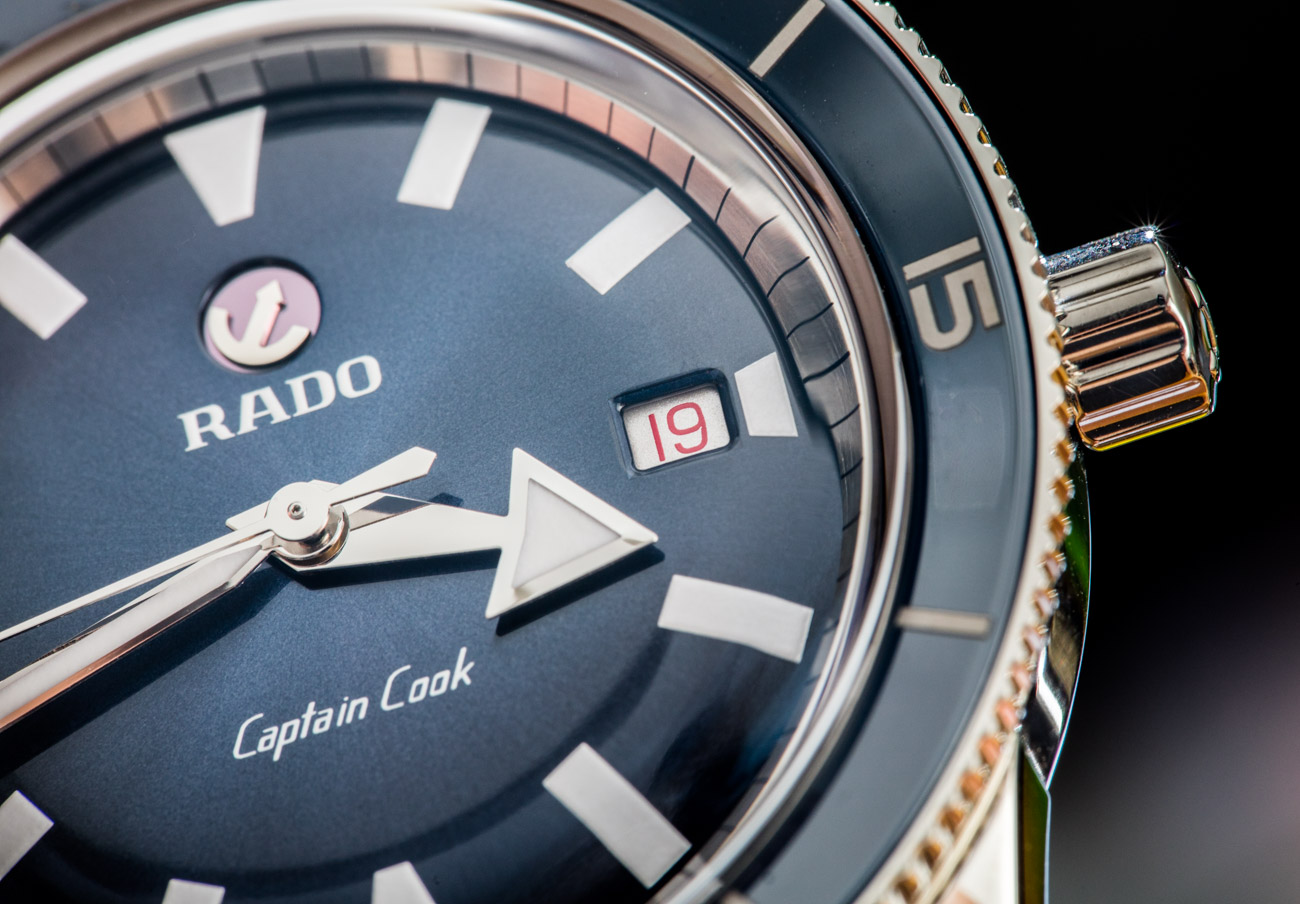
One of the things I’ve had to accept about some of the more modern Rado watches is that they no longer always feature as heavily modern materials as ceramic and and other exotic choices as part of the case. The Captain Cook Automatic does have a blue ceramic bezel insert, but the case itself is stainless steel. Nothing wrong with that, but consumers (at least in North America) used to Rado being all about super scratch resistance metal-looking ceramic materials will have to reexamine what Rado’s values are when considering a timepiece like this.
Probably the most fun piece of Rado DNA in the watch is the (relatively) free swinging anchor that is part of the Rado logo placed under 12 o’clock. The anchor moves around a pivot point a bit like an automatic rotor. It is a small detail but fun. The dial itself is reserved and sparse — with a focus on nice lines, finishes, and legibility. This was, of course, how a good watch was made in the 1960s when the Captain Cook first came out. I like the combination of strong arrow-style hour hand and properly sized minute hand. Overall dial proportions, finishes, and legibility are really refined.
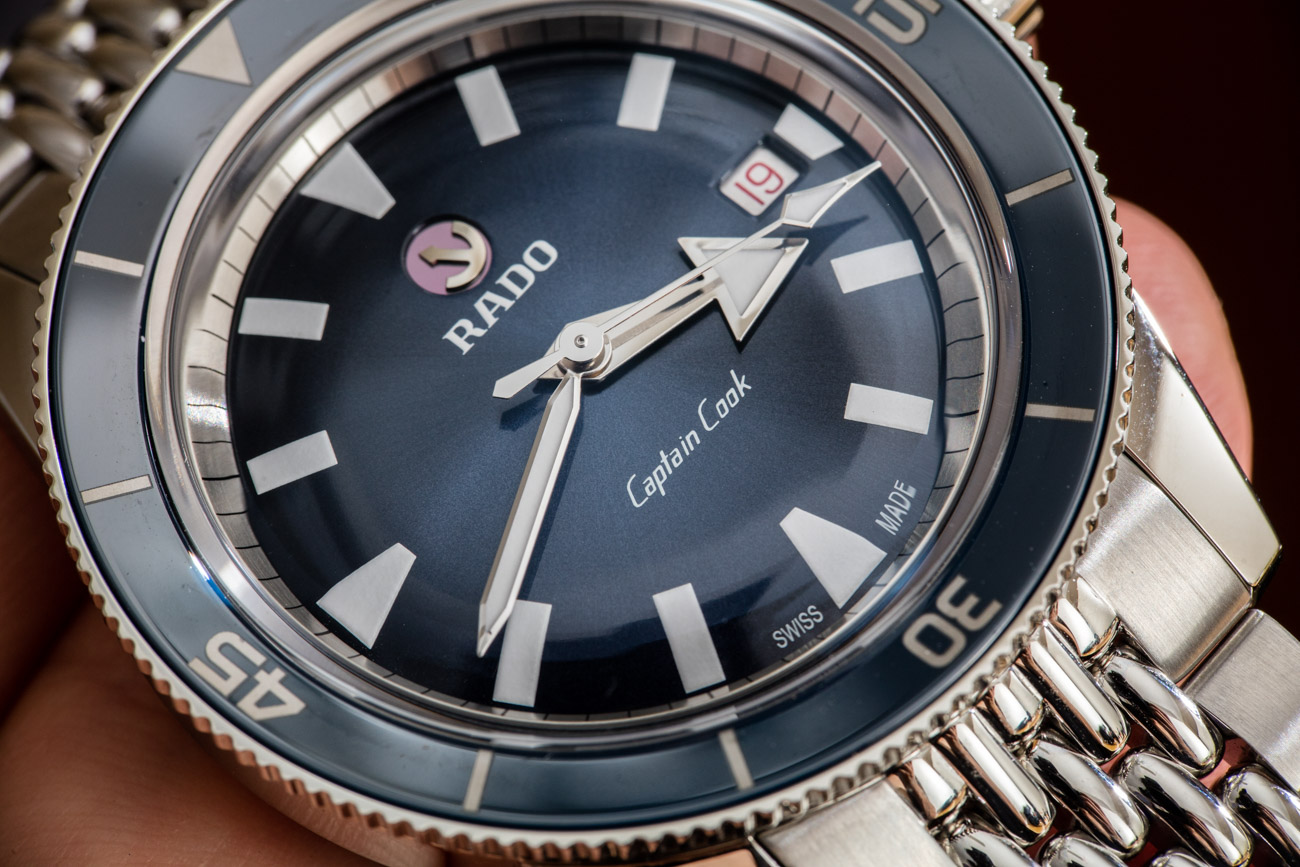
What excites me are all the little details that are economically possible in a $2,000 watch only thanks to Rado’s being part of a large group. That accounts for Rado being able to develop not just a ceramic bezel insert, but a sloped one. Not just a watch dial with a date window, but with a bespoke silver-colored date disc with red-colored numerals. Then you have the shape of the sapphire crystal, which is designed in a sort of “box-style” that is retro in theme but produced from a modern material. The design of the dial, crystal, and the hands together allow the Captain Cook Automatic dial to effectively play with the light, but to also maintain high levels of readability.
Water resistant to 200 meters, the 42mm-wide case feels thinner than its 12mm thickness might imply. Part of this is likely due to the supple and traditionally thin steel bracelet. The middle “rice grain” links are polished and flanked by wider brushed steel links. The bracelet also tapers a bit from where it connects to the case. It isn’t much, but the taper helps make the overall design feel more refined and adds to wearing comfort.

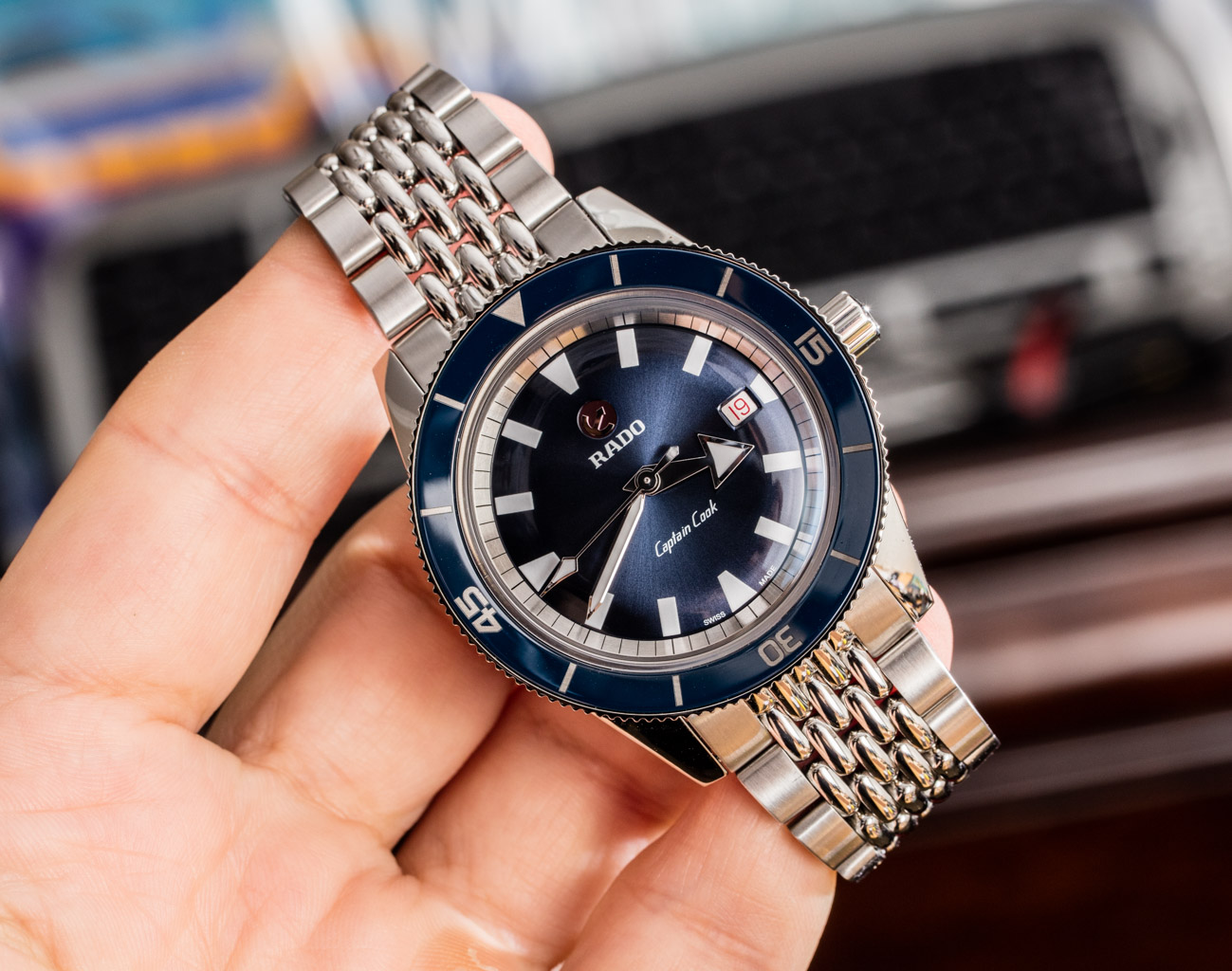
In addition to not making the steel bracelet thicker than it needs to be (a really common issue with watches these days), Rado designed a very slim-looking deployant clasp. So very often, deployant clasps are thick and seemingly larger than they need to be. Here Rado creates a modern deployant that is relatively diminutive like the retro steel bracelets that inspired it. The difference is that this modern bracelet is a lot better made than its antique analogs. Rounding out the bracelet package is the fact that Rado puts quick-release links on, it which means you can remove the bracelet and swap it out with another strap while not needing to rely on any tools.
Rado’s website is hush about the movement inside the watch. That’s too bad because there is nothing to hide about the movement and not mentioning it makes this otherwise serious watchmaker look as though it aren’t proud of what is inside. The Captain Cook Automatic contains either the ETA C07.611 or something akin to it. Swiss ETA is also owned by the Swatch Group, so the movement might not be in-house, but it is in-group. The automatic movement operates at 3Hz and with 80 hours of power reserve. The movement’s longer power reserve is due to the slower 3 versus 4Hz operational frequency, but that doesn’t seem to effective accuracy performance. The ETA C07.611 has been offered in more than one timepiece with a COSC Chronometer certification, and I believe the similar performance between a 3Hz and 4Hz movement is due to use of more modern materials within the movement.

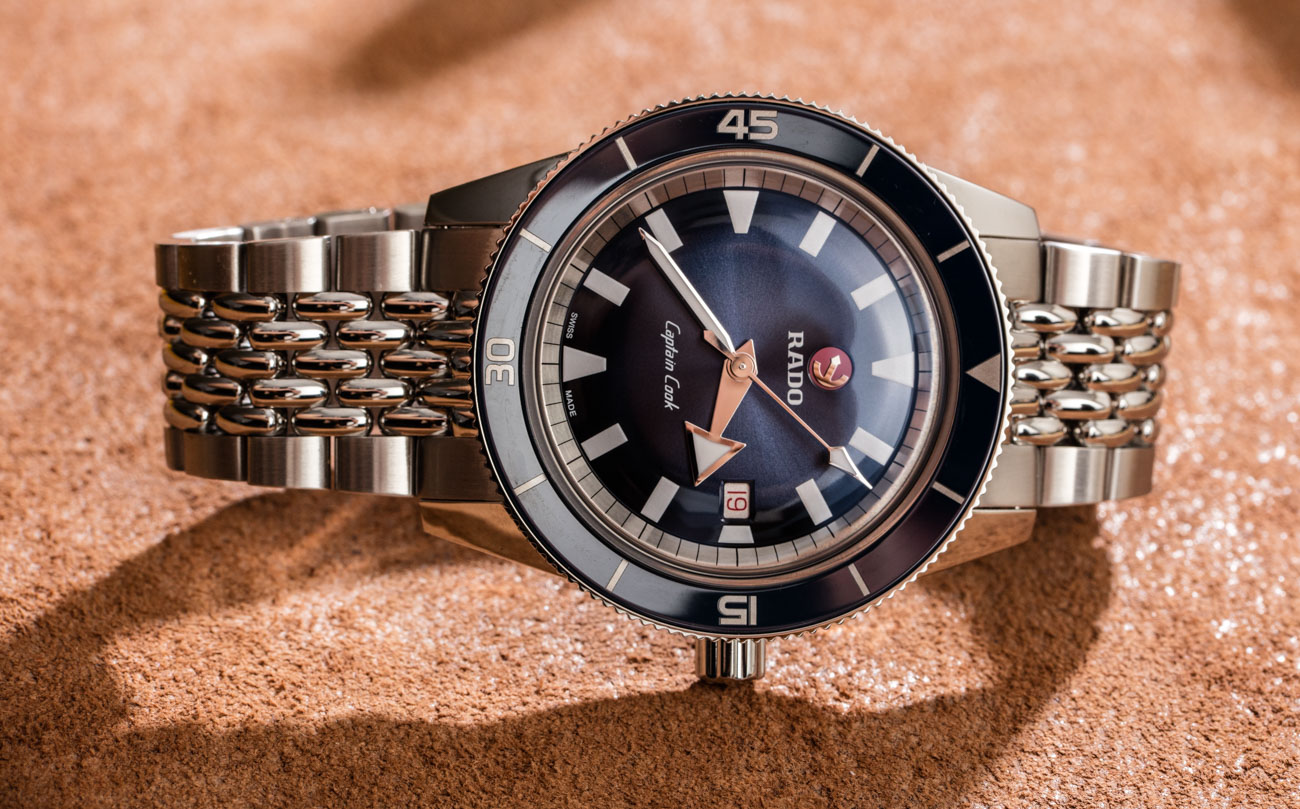
Rado doesn’t use a display caseback on the Captain Cook Automatic 42mm, but it does have the signature “revolving seahorses and stars” motif that we’ve seen on Rado dive watches before. What I like about the Captain Cook Automatic 42mm is, again, how well-rounded it is, an effective modern interpretation of a good-looking yet unpretentious dial and case design. The comfortable wearing dimensions and case that isn’t thicker or more complicated than it needs to be. And then there are all the little details that come from unique parts that can only come from a major group like Swatch (at these prices). Rado also ensures a healthy volume of variety with five currently available dial colors in the Captain Cook Automatic 42mm.
While the Captain Cook Automatic, in a lot of ways, ignores many of the contemporary things Rado has done, it is a very effective modern interpretation of a classic dive watch design for today’s timepiece lovers. Not looking like your typical popular dive watch, Rado is also able to claim that its entry-level luxury dive watches aren’t a “me too” product in design, even if on paper the product is similar to the competition. I really can’t see too many people wearing one of these and having too much of a problem with it, and when compared to the other Rado Captain cook pieces to me the 42mm Captain Cook Automatic is the “porridge is just right” version. Now it is Rado’s turn to create some personality behind the product so that in addition to a nice product, consumers get to buy into a story and legacy. Price once again for the reference 01.763.0505.3.020 Rado Captain Cook Automatic 42mm is (same price on strap or bracelet) $2,000 USD. Learn more at the Rado website here.
Necessary Data
>Brand: Rado
>Model: Captain Cook Automatic 42mm (reference R32501153 | 01.763.0501.3.015 as tested)
>Price: $2,000 USD
>Size: 42mm-wide, 12.1mm-thick, and about 49mm lug-to-lug distance.
>When reviewer would personally wear it: As an easy-to-wear and style daily dive-style watches.
>Friend we’d recommend it to first: A decent choice for people who want one single watch to wear for a few years and need a very versatile model. Anyone who loves the idea of a retro-themed design in an imminently modern package.
>Best characteristic of watch: Excellent sum of its parts as crafted by teams who clearly understand how to make a good watch. Handsome, legible dial. Bracelet is both comfortable and done with a welcome slimness. Priced well, even though the competition is fierce when it comes to casual-wear dive-style watches.
>Worst characteristic of watch: Some Rado fans might miss more ceramic (as opposed to just the bezel insert) or other modern materials, given the brand’s touting of itself as the “Master of Materials.” Rado itself fails to explain how the Captain Cook Automatic is relevant to our times, instead relying on people like me to do so. The result is that the watch-buying masses might easily miss out on a great watch simply because they aren’t thinking of Rado when it comes to their next purchase.

